Rameau, it seemed, had a capacity for beer that matched his enormous size. And so Smithback found it necessary, for reasons of comradeship and credibility, to switch from seltzer to scotch.
He shook his head, forced himself to sit up in the chair. Christ, he’d better call this in before he fell asleep. He took another quick look at the photos, then pulled up his contact list and pressed a button.
His phone was answered on the first ring. “Kraski.”
“Hey, boss.”
“Smithback. I’ve been waiting to hear from you. What you got for me?”
Just like a baby bird, beak wide, frantic with hunger. Already his coup of the previous day was ancient history. Smithback, who was interested in game theory, decided his best strategy was to play to Kraski’s impatience and string him along a bit.
“It’s rough out there,” he replied. “Really rough.”
“Yeah?”
“Something this unprecedented — well, there’s nothing in the playbook. The authorities are working on instinct. Starting with a complete shutdown on information.”
“Have you been drinking? You’re slurring your words.”
“In service of a lead, I assure you.”
“All right. Go on.”
Smithback didn’t respond. He was mentally adding up how many beers he’d bought Rameau and wondering whether he could expense them all or not.
“Roger?” Kraski asked. “You there?”
“Yes, boss.”
“So what you got?”
“The locals don’t know anything; I’ve asked around. But I’ve rented a room and I’m well positioned if anything should come up.”
“Now that you’re on the crime beat, you know you’ve got to dig .”
“They’ve got this one squeezed up tighter than a duck’s ass.”
Silence over the line. Then a sigh of exasperation. “Smithback, I admire how you jumped into this case. But being my best investigative reporter means you have to bring me product — and, on a hot case like this, daily, not next week. You showed real initiative yesterday — so where’d that go today?”
Best investigative reporter . That was more like it. Smithback knew he’d gamed Kraski about as far as he could with this no-info sob story. “I was just getting to that. I’ve got product.”
“Yeah?” Instantly, annoyance was replaced with eagerness. “Like what?”
“Like the number of feet that washed up. The count’s broken one hundred — how’s that? And they’ve been in the water a long time, close to a month.”
“Holy shit. Where are they from?”
“Nobody knows. They’re doing DNA and all kinds of other tests.”
Smithback could hear the creak of the chair as Kraski rolled it up to his desk. “What else?”
“That’s more than anybody else has.” And I had to spend an entire evening getting a shell-shocked technician drunk just to get that. But he’d decided to hold back the really big scoop — or at least, what he hoped was going to turn into the big one.
“Okay.” Kraski knew better than to ask for Smithback’s source. “You’ll write it up and send it to me, pronto?”
“On it now.”
“That’s some good work, Roger. Keep it up.” And Kraski hung up.
Smithback sat back. It was good work.
But he’d done more. Much more. When Paul Rameau was at his drunkest and friendliest, Smithback had heartily suggested they exchange phone numbers. Rameau gave Smithback his number. Then Smithback suggested getting his contact info into Rameau’s phone by calling it from his own.
Which accomplished exactly what he hoped: Rameau took out his phone to check it and kept it out when Smithback gushed about how much he liked the OtterBox case. That led to Rameau talking about how, in his line of work, he dealt with a lot of disgusting and corrosive fluids, which made the rugged OtterBox ideal, especially since he had to use it for work almost every day.
And then he laid the phone on the bar.
It was surely crammed with information. But how to get his hands on it? That was where Smithback got really clever: he made a series of urologic references, including how drinking beer made him piss like a racehorse, which was why he drank only scotch — which in short order had the desired effect of sending Rameau lurching off to the men’s room.
As soon as he was out of sight, Smithback tapped the screen on the technician’s phone to make sure it wasn’t about to lock up, then pulled it over. He had sixty seconds to mine this baby. Email would be too time-consuming. He quickly dismissed voice mail or text for the same reason. But photos — did Rameau take photos of his work? Smithback tapped the photos app, and there they were: dozens of them. Smithback whipped through them — a whole slew of crisp, gruesome pictures of feet in every stage of dissection, from first incision to flayed and skeletonized. Rameau was a damn good photographer, too, every picture crisp and well framed.
They were all repulsive, but none revealed anything noteworthy. And then, with seconds to go, he struck gold. Three amazing photos, all in a row, of the same thing.
With his own phone, he quickly took photos of Rameau’s pictures: one, two, three. And now as he mentally reviewed his coup, he was so pleased that, in the darkness of his “suite,” he once again woke up his phone and scrolled through the shots he’d taken of Rameau’s screen. The three pictures were close-ups of the top outer part of a foot, from the ankle up to where the leg had been severed. The skin around the amputation was shriveled and ragged, and the bone protruding from the sea-bleached flesh was revolting. But there, clearly visible on the skin, was a tattoo — almost all of one, anyway. It was a cross, surrounded by lightning bolts and some lettering. The lettering was a little blurry, but he could do something about that.
He wasn’t going to go off half-cocked and tell Kraski about this. He needed to develop the lead. He’d download the photos to his laptop, then manipulate and sharpen them so he could read those letters. And then he’d ask around on the down low, hoping to identify the tattoo and maybe even where it had been inked. Because something about it looked familiar. And if he was right, this could lead to the biggest scoop of his career. It had to be said, Kraski was nearing retirement... and “Roger Smithback, editor in chief” had a nice ring to it.
Pushing himself out of the chair, he shut off his phone, then made his way toward the room’s lone table, where his laptop — and the story he’d promised Kraski for the Herald — was waiting.
Pamela Gladstone guided the R/V Leucothea from the Caloosahatchee River into the entrance of the Legacy Harbour Marina, heading toward the dock. It was a tricky landing, made worse by a twenty-knot offshore breeze. As she approached the pier, the High Point Place towers rose on her starboard side, casting late-afternoon shadows across the water. Approaching at the barest headway, she eased the bow of the vessel toward the dock and gently pinned it against the bumpers to keep it from blowing off, while throttling down and turning to starboard.
“Put over the aft tending spring line,” she called to her postdoc and unwilling first mate, Wallace Lam, ready at the gunwale.
The line went over, a perfect throw for a change, and a pier crewman cleated it neatly.
“Hold the spring, I’m coming ahead on her,” Gladstone said, keeping the starboard ahead and the port backing slow, bringing the forty-six-foot research vessel up snug against the pier face. She pulled the throttles into neutral. As the rest of the lines were cleated, she breathed a sigh of relief that the maneuver had gone well and she hadn’t made a fool of herself, like last time, when she had smacked a piling with her stern. Total jackass carelessness, and naturally everyone had seen it and she had to fill out an accident report, even though neither pier nor ship had sustained any damage beyond an unsightly streak of black rubber on the boat’s white gelcoat.
Читать дальше


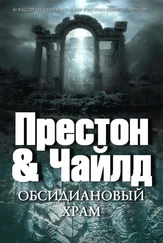
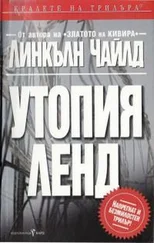



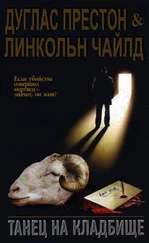
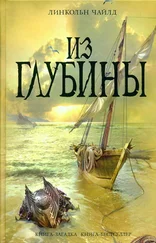
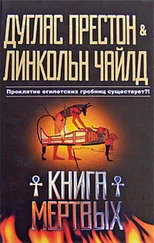
![Линкольн Чайлд - Стихи для мертвецов [litres]](/books/396536/linkoln-chajld-stihi-dlya-mertvecov-litres-thumb.webp)

